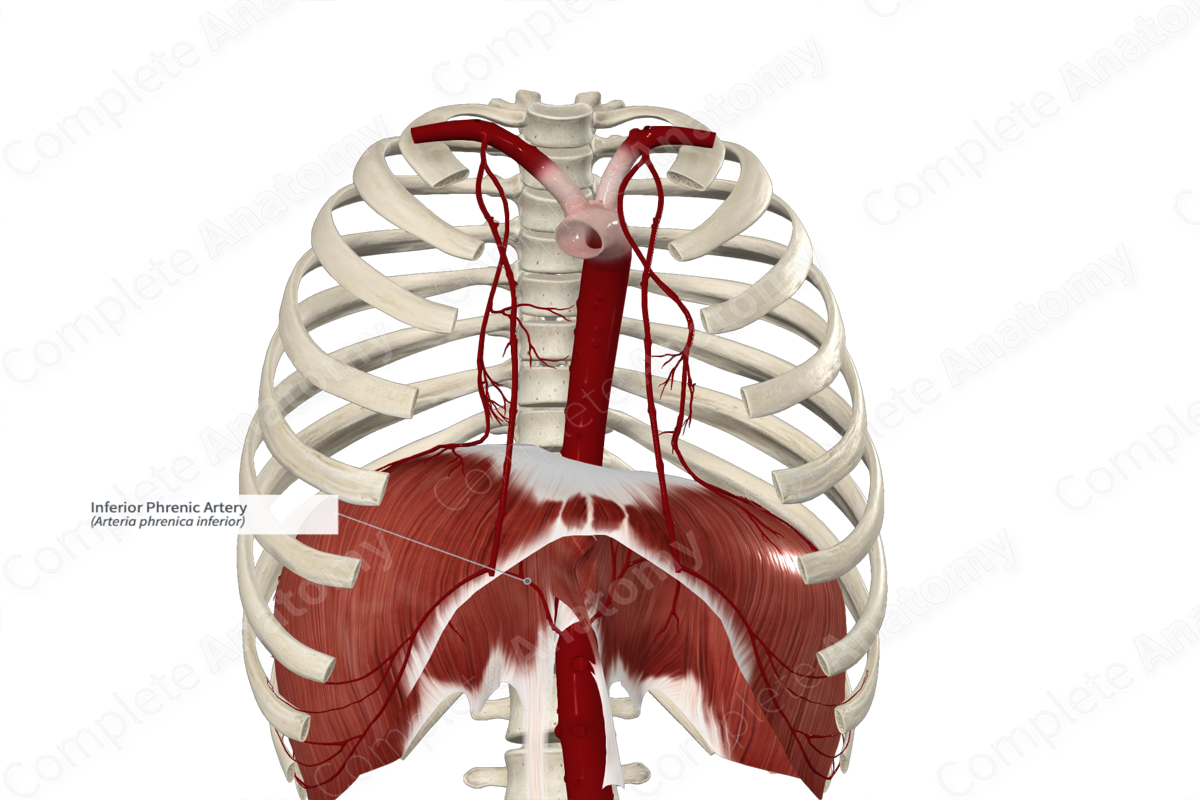
Quick Facts
Origin: Abdominal aorta.
Course: Superiorly along the inferior diaphragm.
Branches: Superior suprarenal arteries and esophageal branches.
Supplied Structures: Diaphragm and abdominal esophagus (left only).
Origin
The inferior phrenic arteries are the first paired branches of the abdominal aorta at the level of the twelfth thoracic vertebrae (T12). Their origin is variable, and they may arise via a common origin on the aorta or from surrounding vessels such as the celiac trunk.
Course
The inferior phrenic arteries cross anterior to the crura of the diaphragm and course in a superolateral direction. These arteries branch extensively along the inferior surface of the diaphragm.
During its course, the left inferior phrenic artery travels posterior to the esophagus and gives off branches to the abdominal esophagus. The right inferior phrenic artery passes posterior to the inferior vena cava. Branches of the left and the right inferior phrenic arteries travel towards the central tendon and anastomose with each other. Additional branches supply the muscular portion of the diaphragm and anastomose with the lower intercostal, musculophrenic, and pericardiacophrenic arteries to ensure continuous supply.
Branches
The left inferior phrenic artery often gives esophageal branches while the right inferior phrenic may supply the caval opening of the diaphragm. Several small vessels descend from the inferior phrenic arteries and travel towards the suprarenal glands. These are the superior suprarenal arteries.
Supplied Structures
The inferior phrenic artery supplies the inferior aspect of the diaphragm, contributes to suprarenal gland vasculature, and may also supply the abdominal esophagus.
Learn more about this topic from other Elsevier products
Artery

Arteries are vessels transporting blood between heart, tissues, and other organs in order to supply them with nutrition and oxygen.




